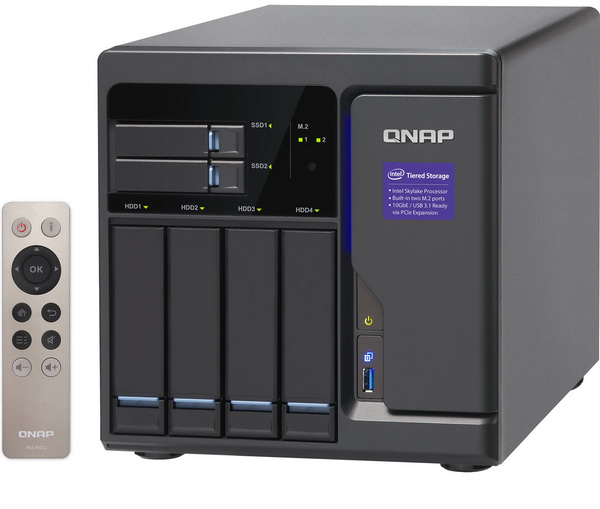INTRODUCTION
Solely based on recent sales numbers it seems that network attached storage devices (NAS) have not only managed to replace complete server systems as the backbone of small businesses and large enterprises but are also slowly (yet steadily) replacing HTPC (home theater PCs) and NVR (network video recorders) ones. At the same time as some of you have pointed out recently thanks to its cost, low power consumption and high customizability the Raspberry Pi platform is still favored by many people looking for a low-cost alternative to NAS devices but due to the massive difference in capabilities, computing power, quality, number of available bays and ready to use out of the box this is obviously aimed at an entirely different segment of the market. Today we'll be testing the latest addition in the small business (SMB) line of NAS servers by QNAP the extremely powerful and feature-rich TVS-682-I3-8G.
QNAP Systems, Inc., as its brand promise "Quality Network Appliance Provider", aims to deliver comprehensive offerings of cutting edge network attached storage (NAS) and network video recorder (NVR) solutions featured with ease-of-use, robust operation, large storage capacity, and trustworthy reliability. QNAP integrates technologies and designs to bring forth quality products that effectively improve business efficiency on file sharing, virtualization applications, storage management and surveillance in the business environments, as well as enrich entertainment life for home users with the offering of a fun multimedia center experience. Headquartered in Taipei, QNAP delivers its solutions to the global market with nonstop innovation and passion.
The TVS-682-I3-8G is actually the 3rd NAS server based on an dual-core Intel Core i3 CPU (i3-6100 model - 3.7GHz with 3MB SmartCache and 4 threads) to ever reach our lab (also available with thunderbolt connectivity) but for people who may want to save some money in the process QNAP also makes its available with a less powerful (yet still very fast) dual-core Intel Pentium CPU (G4400 - 3.3GHz with 3MB SmartCache and 2 threads). Since both models feature Intel HD Graphics (530 for the i3 model and 510 for the Pentium model) they support DirectX v12, OpenGL v4.4 and 4k playback at 60Hz. Both models also feature a total of 8GB DDR4 RAM (expandable to 64GB), 512MB of DOM flash memory, two PCIe slots (Gen3x16/Gen3x4), four 2.5/3.5" drive bays, two 2.5" drive bays and two M.2 2242/2260/2280/22110 slots. External connectivity however is where the TVS-682 really has no competition since it offers one HDMI v2.0 port, two HDMI v1.4b ports, 5 USB 3.0 ports, 4 Gigabit Ethernet Ports (support link aggregation), 2 microphone 6.3mm inputs, single 3.5mm audio/line-out and two built-in speakers (can't be used simultaneously with the 3.5mm output). So is the brand new TVS-682 the "ultimate" NAS server for small businesses, offices and even demanding home users? Let's find out.

 O-Sense
O-Sense












